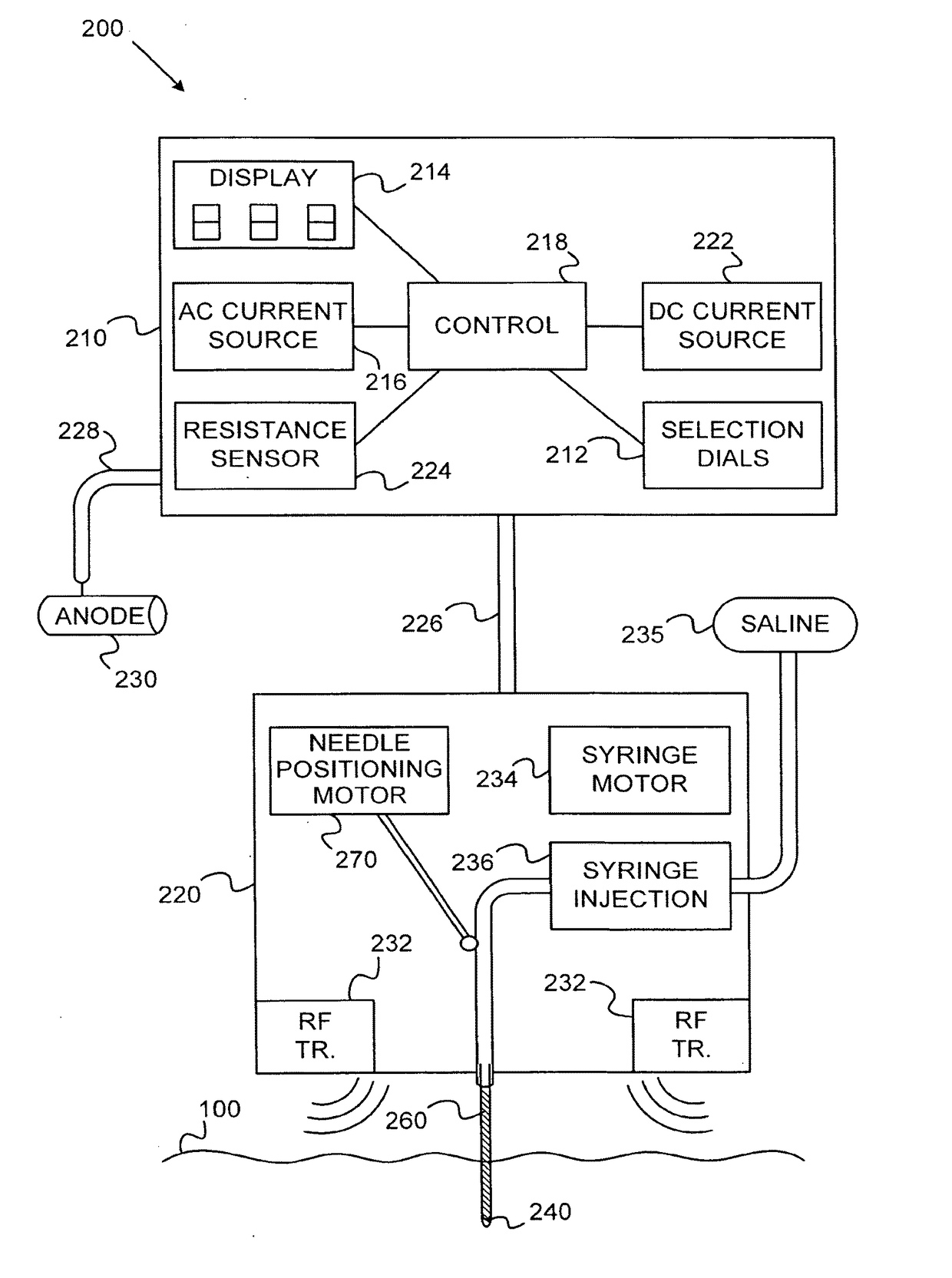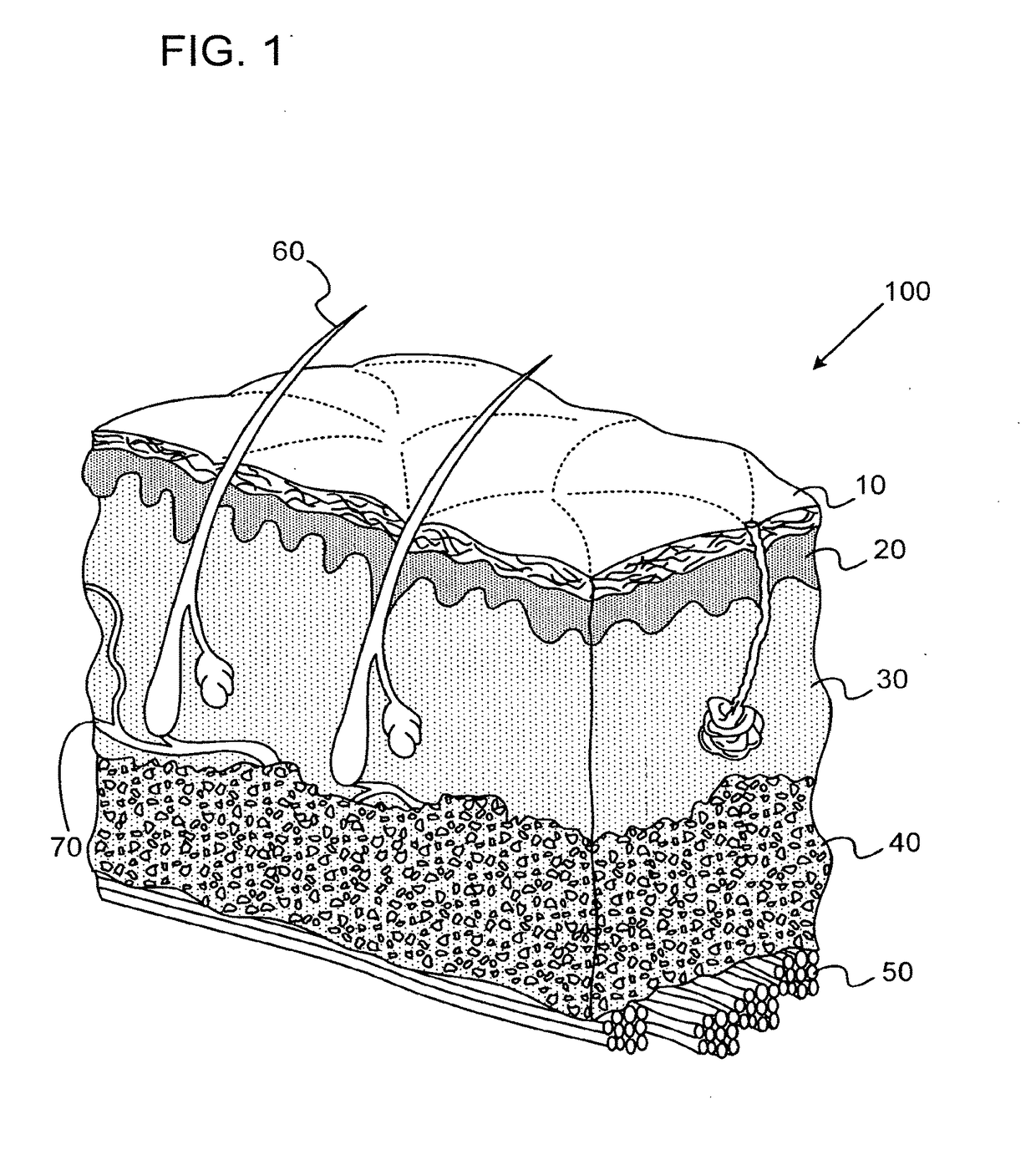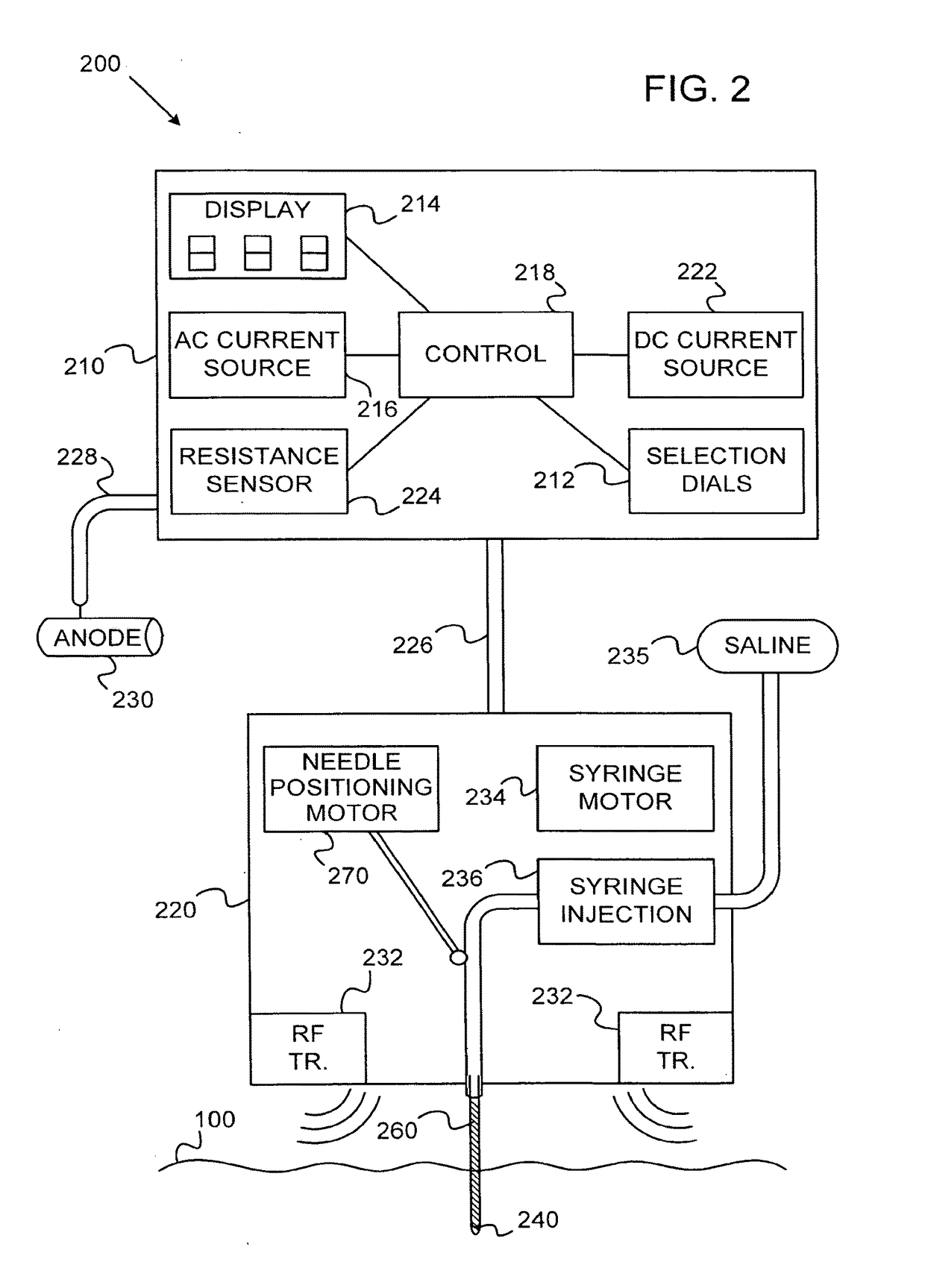Cosmetic skin rejuvination
a skin rejuvenation and cosmetic technology, applied in the field of skin rejuvenation, can solve the problems of skin pigmentation problems, skin to lose its youthful appearance, develop wrinkles, mild injury to the skin, etc., and achieve the effect of precise damage to a desired area and reducing the thickness of the skin
- Summary
- Abstract
- Description
- Claims
- Application Information
AI Technical Summary
Benefits of technology
Problems solved by technology
Method used
Image
Examples
Embodiment Construction
[0053]FIG. 2 is a schematic illustration of a device 200 for treating skin 100, according to an exemplary embodiment of the invention. In an exemplary embodiment of the invention, a negative electrode of a DC circuit is provided as a needle 240 in device 200. The needle 240 is adapted to be inserted into the skin 100 of a person for performing electrolysis. Optionally, the needle has a small diameter, for example between 50-500 microns so that it does not cause noticeable damage to the outer layer of the skin when inserted into the skin.
[0054]A person's skin 100 contains moisture made of water (H2O) and salt (NaCl). The amount of moisture tends to rise the deeper you penetrate into the skin, for example the dermis 30 tends to be more moist than the epidermis 20 and the fatty areas in the subcutaneous layer 40 tend to be more moist than the dermis 30. The negative electric current causes some of the water and the salt molecules of the moisture to break up into Ions (Na+, Cl−, H− and ...
PUM
 Login to View More
Login to View More Abstract
Description
Claims
Application Information
 Login to View More
Login to View More - R&D
- Intellectual Property
- Life Sciences
- Materials
- Tech Scout
- Unparalleled Data Quality
- Higher Quality Content
- 60% Fewer Hallucinations
Browse by: Latest US Patents, China's latest patents, Technical Efficacy Thesaurus, Application Domain, Technology Topic, Popular Technical Reports.
© 2025 PatSnap. All rights reserved.Legal|Privacy policy|Modern Slavery Act Transparency Statement|Sitemap|About US| Contact US: help@patsnap.com



